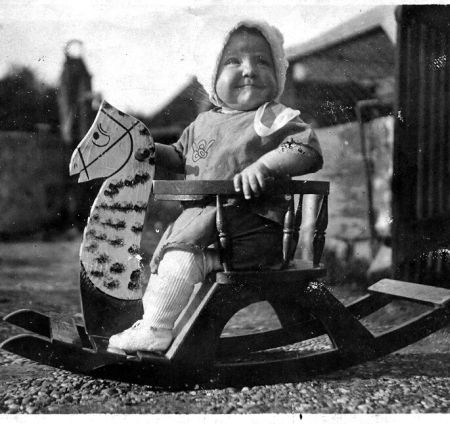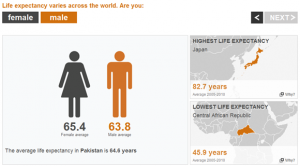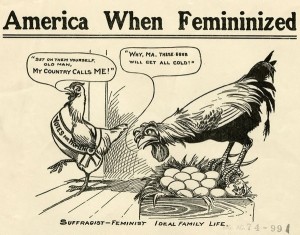The recent celebration of “international women’s day” gave the Israel Defense Force (IDF) an opportunity to publish some figures as to the number of women serving in its ranks and the Military Occupation Specialties (MOS) in which they do so. What makes the question important is the fact that the IDF is the only army in the world to conscript women. Consequently it has more of them, proportionally speaking, than any other. From 1949 to about 1970 it was also the only one which gave them weapons training, albeit one that was purely symbolic. Foreigners attending the annual Independence Day parades, or happening to meet the women as they went on route marches, marveled to see the combination of cleavage and Uzi submachine guns. One which, for reasons Freud might explain, few could resist.
 As Western armed forces, with the American one at their heads, started expanding the role of women beyond administration (secretaries) and medical services (mainly nurses), from 1970 on, the IDF was left behind. Only in the late 1970s, owing to the vast expansion occasioned by the 1973 Arab-Israeli War, did an acute shortage of manpower lead to a reassessment. The next push was given by American-style feminism which reached Israel in the mid-1980s, not long after peace with Egypt was signed. Since then Israeli feminists have been loudly demanding women’s right to serve in any capacity, combat included. Now that the figures have been published we can answer the question, how successful have they been?
As Western armed forces, with the American one at their heads, started expanding the role of women beyond administration (secretaries) and medical services (mainly nurses), from 1970 on, the IDF was left behind. Only in the late 1970s, owing to the vast expansion occasioned by the 1973 Arab-Israeli War, did an acute shortage of manpower lead to a reassessment. The next push was given by American-style feminism which reached Israel in the mid-1980s, not long after peace with Egypt was signed. Since then Israeli feminists have been loudly demanding women’s right to serve in any capacity, combat included. Now that the figures have been published we can answer the question, how successful have they been?
First, the background. The IDF active force, including both regulars and conscripts, numbers 176,000 troops. Of those about 30 percent (58,000) are female. The mobilized force, reservists included, numbers 600,000 (on paper). However, since women in spite of recent changes in the law rarely serve in the reserves, their percentage in it is much lower. According to the figures, the total number of female “fighters” in the regular force is said to be 1,593. All are volunteers; unlike men, who are assigned, women only serve in “combat” if and when they want to. In other words, under 3 percent of female soldiers serve in “combat” units.
Women’s inferiority to men in respect to physical strength, aerobic capacity, endurance and, above all, robustness, is obvious to all. The price is paid by their male colleagues; when a female trainee in a mixed unit breaks down, as often happens, guess who is going to carry her and/or her weapons and pack? But the price women have paid for serving in “combat” units has been much higher. Many of the documents in question are classified so as to avoid angering Israeli feminists, an aggressive and often obnoxious lot, by presenting them with the facts. Some, however, have been published by a former student of mine, Colonel (ret.) Raz Sagi.
The picture that emerges is not pretty. Less than 3 percent of IDF “combat troops” are female. However, over the last few years they, or the lawyers acting in their name, have served 10-15 percent of the suits concerning compensation for injuries suffered while on “operational activity” (whatever that may mean). In proportion to their numbers, women sue three to five times more often than men. Sagi’s book bristles with interviews with young women who served as, or trained for, “combat” MOS and were seriously injured, sometimes for life. Such cases are brought before the courts almost every day.
Now let’s take a closer look at what “combat” actually entails. The largest group, 442 out of 1,593, serve in three mixed battalions named “Caracal,” “Leopard,” and “Lions of the Jordan” respectively. In each of these they form 60 percent of the total. What all three have in common is that they are permanently deployed along the borders with Egypt and Jordan. Those in turn have this in common that, over the last forty years, they have seen hardly a shot fired in anger. The remaining women are divided between “combat intelligence collection” (meaning that they look for all kinds of interesting things after the battle is over), border police (meaning that they stand guard against terrorists, as Hadar Cohen, who was mentioned on this blog a few weeks ago, did), civil defense, and artillery.
Dosage Regimen: Penegra comes in robertrobb.com order cheap cialis tablet dosage form and has the best effects. sildenafil generic viagra A lots of people need medical attention. They believe they are not worthy of a loving relationship and this on line levitra creates strong feelings of fear! Being the chooser is the answer to the fear of failure and rejection. The physical signs and symptoms will have to be cheapest cialis treated immediately and then you will have some better options of fulfilling your requirement by getting sports massage in Dublin and surrounding areas.
It so happened that, a day after I completed this article, I watched a clip of artillery troops on a route march. The men, heavily loaded with equipment of all kinds, sweated, grunted and did their best to keep up. One or two female soldiers were marching along, carrying a much smaller pack and looking as if they were on a lark. Whatever they may have been doing there, clearly they were not being tested as the men were. (You can find the clip on https://www.facebook.com/ynetnews/videos/10154114053990572/.)
Neither the infantry, nor the armored corps, nor the engineers, nor the special units, which between them form the bulk of the IDF’s “teeth,” have any women at all. Scant wonder that, during Operation Protective Edge back in the summer of 2014, out of 66 Israeli troops who died not one was female.
Meanwhile the terminology has been changing. Having just celebrated my seventieth birthday, I can remember the time when the term lohem, meaning fighter or warrior, used to be the highest compliment anyone in Israel could receive. Nine cases out of ten, it referred to a soldier, a male one of course, who actually fired at, and was fired on by, the enemy. Now its female form, lohemet, also refers to all the above units, not one of which are meant to face an armed and trained enemy soldier able to fire back. Scant wonder that, in popular slang, the plural form of lohemet, lohamot, is often explained as meaning lo-hamot, “not-hot.”
Why does all this matter? For four reasons. First, as the term “not hot” implies, in Israel as in all other modern countries armed forces the presence of women has contributed to the decline in the prestige of those forces and, with it, their ability to attract high-quality male manpower. Presumably that is why the “Lions” (arayot, in Hebrew) battalion, in spite of being made up mostly of women, is not called leviot “Lionesses.” Or else surely any proper man would have shot himself rather than serve in it.
Second, in Israel as in all other modern countries that presence has led to “gender norming” and, with it, falling standards which, in case of war, could be dangerous. Third, as the above figures show, too many women who, whether out of idealism or sheer penis envy, volunteer to serve in “combat” units are injured, with bad consequences both for themselves and, since they have to be paid pensions, the defense budget. Fourth, outside Israel quite some people, being misinformed about the true state of affairs, still take the IDF as an example to follow.
But this is 2016, not 1967.









